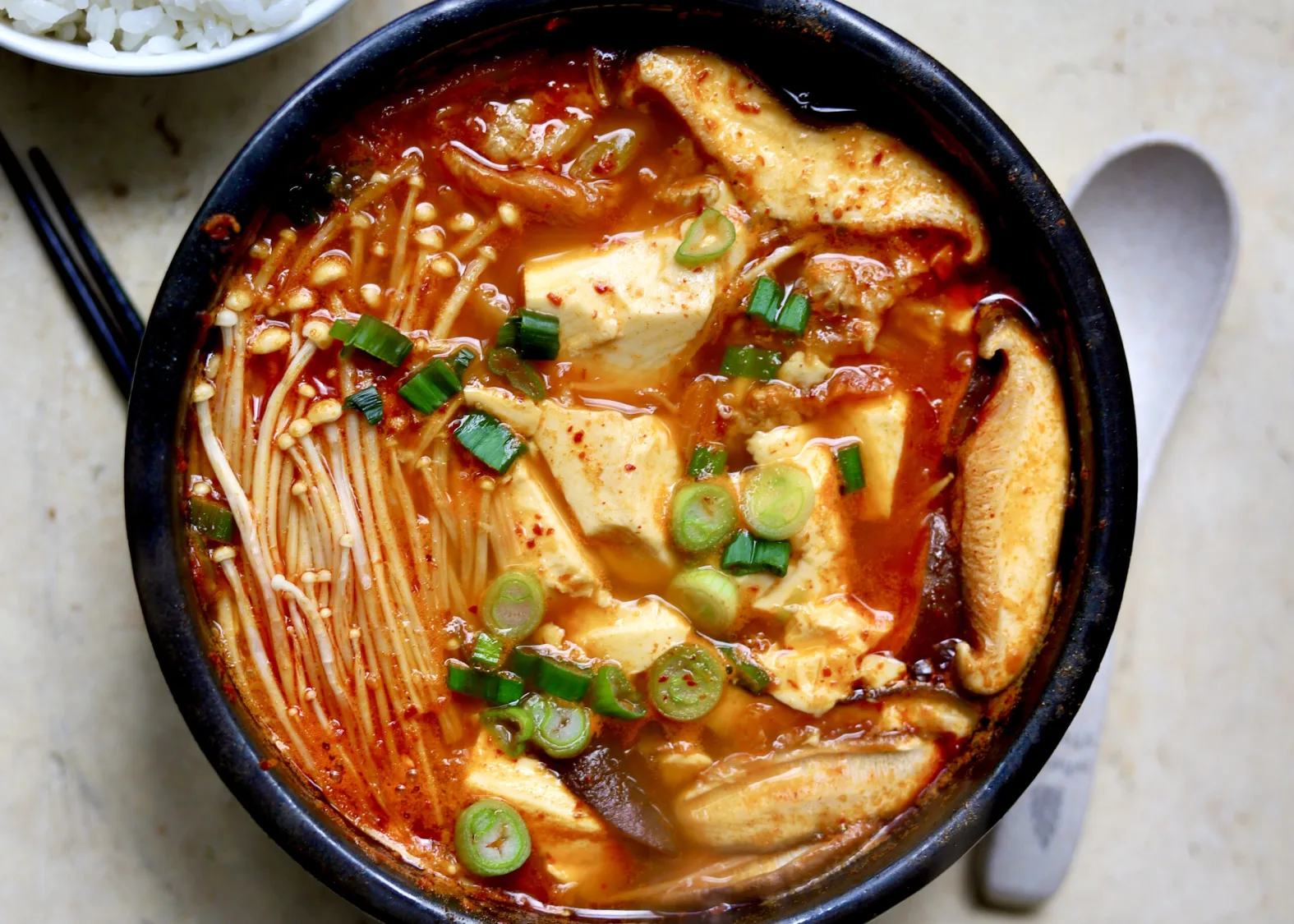
Sundubu-jjigae
Spicy soft tofu stew with seafood or meat.
Ingredients
- •Soft tofu
- •Kimchi
- •Seafood
- •Egg
- •Gochugaru
Instructions
Prepare Base
Make anchovy broth and add ingredients
Finish
Add tofu and egg, simmer until done
Sundubu-jjigae is a popular Korean stew known for its spicy and comforting flavors. The dish features soft tofu, which has a silky texture that contrasts beautifully with the robust, spicy broth. Often, it includes seafood or meat, making it a versatile and hearty meal.
The origins of Sundubu-jjigae are deeply rooted in Korean culinary tradition. It is believed to have been enjoyed for centuries, with each region and family adding their own unique twist to the recipe. The dish has gained international popularity for its bold flavors and satisfying warmth.
To make Sundubu-jjigae, start by preparing the base. In a pot, make an anchovy broth by simmering dried anchovies and kelp in water. Once the broth is ready, remove the anchovies and kelp, and add kimchi, gochugaru (Korean red chili flakes), and your choice of seafood or meat. Let the mixture simmer until the flavors meld together. Add soft tofu to the pot, breaking it into large chunks, and let it cook until heated through. Just before serving, crack an egg into the stew and let it poach in the hot broth.
There are several customizations you can try with Sundubu-jjigae. For a vegetarian version, omit the seafood or meat and add more vegetables such as mushrooms, zucchini, or spinach. You can also adjust the level of spiciness by adding more or less gochugaru to suit your taste.
In Korea, Sundubu-jjigae is often served bubbling hot in a traditional stone pot, accompanied by a bowl of steamed rice and various banchan (side dishes) such as kimchi, pickled radishes, and seasoned vegetables. The combination of the spicy stew and the mild rice creates a balanced and satisfying meal.
While Sundubu-jjigae is a delicious and nutritious dish, it is important to enjoy it in moderation. The stew can be high in sodium due to the use of kimchi and gochugaru. To make a healthier version, consider using low-sodium broth and reducing the amount of salt used in the recipe. Additionally, be mindful of portion sizes and balance the meal with plenty of fresh vegetables.
